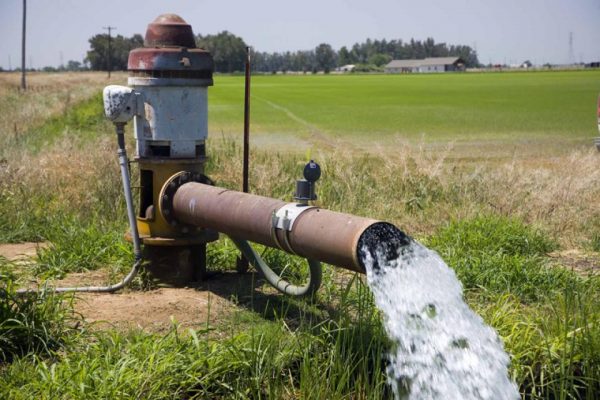South Africa is moving from one water crisis to the next. Between 2015 and 2020, Cape Town suffered several water shortages that peaked at Day Zero, when taps ran dry across the city. More recently, the economic hub of Johannesburg has been suffering numerous water outages and could be facing a similar situation to Cape Town.
Yet, while Cape Town’s water woes were due to a severe multi-year drought, Johannesburg’s problems stem from crumbling water infrastructure. It’s a scenario that is surfacing across the country. The Blue Drop report shows that non-revenue water losses have risen from 37% to almost 50%. Over 330 wastewater sites are in critical condition, and there has been a spike in water contamination that has now begun to affect underground sources.
These numbers paint a dire situation. But there are answers. During a recent online panel discussion hosted by water technology vendor Xylem and infrastructure media outlet Creamer Media, three experts in the water utility field shared their insights.
Not a unique situation
The conversation started with an important point—SA’s water problems are not isolated, and there are examples from other regions that can help the country correct its course.
“These challenges are not unique,” said Vinesan Govender, Engineering Manager at Xylem Africa. “We’ve seen this across the continent, across the world, that our utilities are facing this growing demand, but having to maintain very ageing infrastructure. So, in response, what are we seeing in terms of technology trends? We are seeing water undergoing digital transformation. What we are seeing is the enhancement of digital systems coming in to manage the infrastructure, manage the efficiency and sustainability of this infrastructure.”
Automation and insight guided by richer data are helping utilities rapidly improve their responses, a revolution Govender calls decision intelligence. Powered by sensors, Internet of Things devices, and cloud processing, this technology capability dovetails with intelligent and efficient utility equipment such as smart pumps and advanced leak detection. It can also exploit site data that utilities are already collecting.
“I remember a few years ago when we were talking about the amount of data that we were collecting from our plants, our operating plants, it was quite a lot,” said Silver Phiri, Head of Projects at Seapro Africa. “Almost 60% of the data we collected we never utilised. We couldn’t analyse it because we didn’t have the tools. But now, guys on the ground are excited about the predictive maintenance tools that are coming out.”
Decision intelligence is helping utilities make faster and smarter decisions. New ways of using data range from very immediate to sophisticated modelling. Data is being analysed securely by cloud-based machine-learning artificial intelligence, feeding the results to custom dashboards that utility managers can access conveniently via their computers and mobile devices. And at the peak of this revolution is the digital twin, a digital representation of real-world conditions and changes.
“We can now go into digital twins,” said Reuben Marowa, Sales & Operations Manager at Xylem Southern Africa. “If I look at the situation that occurred in South Africa, where we had several adverse weather conditions, with a digital twin you can assimilate probabilities, put in place certain scenarios and make plans ahead of a natural disaster actually occurring. From a decision-making perspective, that allows the utilities to proactively plan, get their house in order and mitigate any challenges that may arise.”
Getting water technology right
Marowa noted that access to water, reducing scarcity, and combatting contamination are the areas where technology makes a change for water and water utilities, especially towards reaching the benchmarks of the United Nations’ Sustainable Development Goal 6: “clean water and sanitation for all.”
However, technology is not a magic answer to water utility problems. As Govender explained, technology is just a tool and relies on the ability of people to deploy and use it. He advised that people higher up in utilities should adopt pragmatic views on using technology, and that those who still fear the disruption of technology should reconsider their views:
“Some of the factors that influence the high inertia by our utilities to adopt new technologies is a low appetite to take risks and implement change. Then there’s also the evaluation of technologies and a biassed view on the effectiveness of technology. It is often viewed as technology being the solution to all our problems faced, but the benefits and value derived from the technology is only achieved if the technology is deployed into the right ecosystem.”
Phiri primarily works with utility professionals on the frontline. He observed that water utilities are large and complex organisations with rigid hierarchies that can lead to slow decision-making. Utilities will make bigger gains if they focus on removing communication barriers and gaps between hierarchy layers.
“People on the ground will know what needs to be done. But there are quite a lot of communication breakdowns across all levels of organisations. End users don’t necessarily talk directly to the people that make the decisions. So, you see that their ability to act is often hampered by rigid hierarchies.”
Still, changes are happening. One of the most notable is that water utilities are moving away from viewing water management in silos. According to Marowa, there is a growing focus on the entire water supply chain and how that influences every stop water makes between the source, treatment, and consumption. Specifically, water provision and sanitation are now considered as complementary functions.
“Looking about five to ten years back, the main focus for most water utilities was water provision. But invariably, when you consume water, you generate waste. There’s been a shift within the utility spectrum to say we now need to look at water from an entire value chain perspective. Not only from a clean water provision, but through a wastewater management perspective.”
How to improve SA’s water utilities
The panellists agreed that new water technologies, especially data-informed decision intelligence, make an enormous difference for water utilities, and that there is appetite and excitement for these changes.
But utilities must beware of treating technology as a single answer to complex problems. To get the best impact, they need to focus on their people, end consumers, and the structures that make-or-break communication between these layers. Other advice included the need for water technology vendors to speak to more stakeholders. The panellists also spoke about the importance of investing in training and knowledge-building among utility workers to help them stay in step with new developments and choose the right technologies for the best use cases.
Above all, the water technology revolution is a human capital revolution, said Govender, “The quicker we accelerate this adoption of technology and upskill of our human capital and the operations to deploy, use and manipulate the technology, the better the chance we have of getting ahead of this rate of decay that is happening on our infrastructure.”
Find out more by watching the one-hour panel discussion at https://www.youtube.com/live/DoaETqZ0Mso?t=52s.








